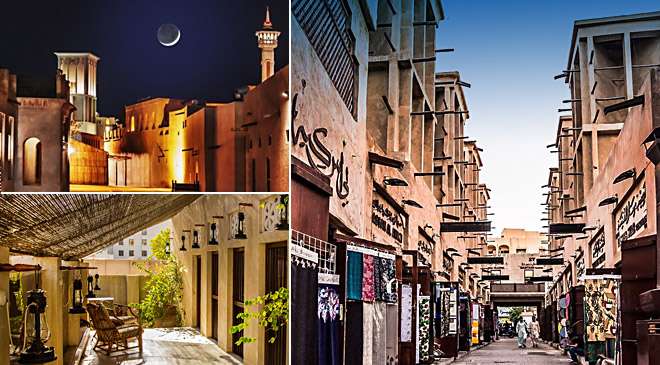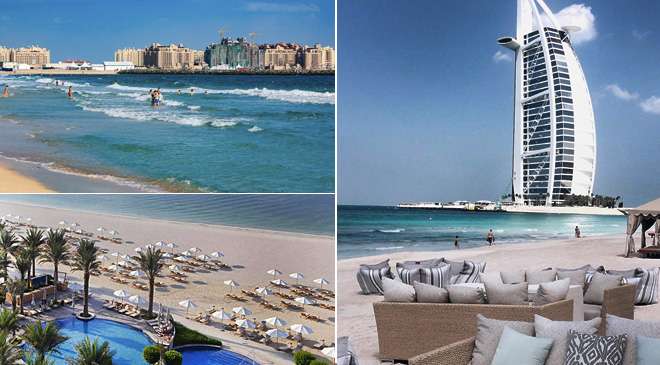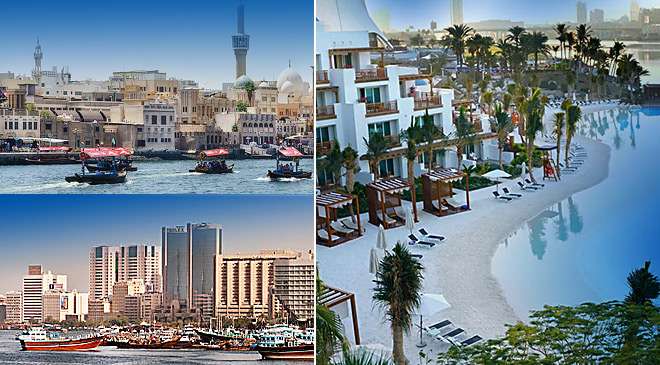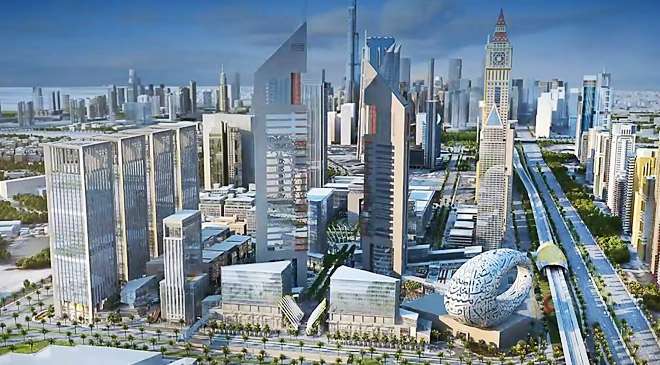If you are in Dubai and want to know more about the Middle Eastern Arabic culture and the history of the United Arab Emirates, then search the highly popular Bastakiya district, called Al Bastakiya in Dubai.
Al Bastakiya district situates inside the Medina or old city-centre of Dubai, called Bur Dubai. Al Bastakiya has today the most important role when it comes to any cultural expedition or exploration within Dubai. Many already know that Al Bastakiya is Aladdin’s cake of the cultural heritage and historical sites in Dubai.
When knowing more about the Emirates history, and learning more about the history of Dubai, and mainly the Al Bastakiya quarter, we will see how much influence the neighbouring countries always had on the cultural life, arts and on the architecture of Dubai. Most notable influences came from Iran and Libya. You can clearly see and experience these influences when in Al Bastakiya.
Al Bastakiya is the oldest quarter of Dubai, but still relatively young as it was built in the early 1800’s. Of course, each building taken care of, and most of them renovated in order to give their best, mainly for the visiting tourists. Interesting fact is that we can thank the existence of Al Bastakiya to an English architect called Otter, who has just happened to live in Dubai in the 1970’s, the time when the modernisation of Dubai had started. Al Bastakiya was also on the list to be completely destroyed and rebuilt with modern houses, but due to the campaign of Otter, and the visit of Prince Charles, who being fond of history and old architecture, suggested to the Emperor of Dubai to keep Al Bastakiya. In 2005, the renovation works have started in order to preserve Al Bastakiya for the future generations.
Al Bastakiya is known worldwide of its beautiful wind-towers or wind-catchers, as they call them “Barjeel”, originating from Iran where they widely used this genuine architectural element, such as an air conditioner of the older times. Barjeels, also called “Malqaf” in Arabic, and however, they were not only used in Iran, Emirates has clearly borrowed their technique, when it comes to both their appearance and the way of building them. Another interesting element we can spot when seeing or looking into traditional Arab-Muslim homes are the diverse sizes of its doors. Still today, when a house is built in an Arabic country, they make the entrance door very big, but the other entrance inside the house is smaller, especially shorter than the average.
The reason of this architectural trick is easy when we know a bit of the Muslim religion. The entrance door can be big to indicate the wealth and happy-life of its owner family. However, the main entrance door should be small, to prevent an unexpected male visitor to the house and keeping women away from them. That is why, upon entering the main door of the house, everyone, especially the of the taller must bend, in order to give time to the females of the house either to disappear, or to get prepared for the reception of the guest. What a smart element!
Life on the streets of Al Bastakiya is always fizzing: the streets are full of life, just as its must-see souks. It is the nicest to visit Al Bastakiya around sunset time, when the streets start to get crowded even more, when you can see every cafés, every restaurants filled with locals enjoying their rest-time with a good coffee or tea or even meals as well. Al Bastakiya, being in Bur Dubai, is relatively easy to reach by metro, bus or even by water-taxi to the Al Fahidi fort. So, when in Dubai, do not miss the beautiful and traditional Al Bastakiya quarter.



